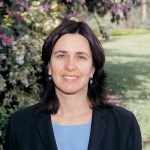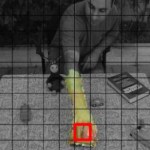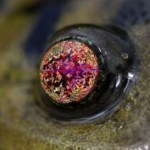mathematical model
The Weizmann Wave has been a bit dormant lately for various reasons, including the fact that we have been getting ready to launch our new website (same address, same content, slightly different look).
While you eagerly await the new site, here is a quiz we put on Facebook to see if anyone has been following our research news over the past year.
Also, don’t forget to check out Cell Biology by the Numbers, featuring the best picks of the BioNumbers site, edited by our own Prof. Ron Milo, together with Prof. Rob Phillips of CalTech and illustrated by Nigel Orme. Start browsing and you’ll be…
Have you complained about the weather recently? On the gas giants at the edges of our solar system, Uranus and Neptune, hurricane-like storm systems as big around as Earth blow 1000 km/h winds for years on end.
Voyager II image of Neptune, showing storm features. Image: NASA
But wait…What exactly constitutes weather on a giant gas planet? Here on planet Earth, there is a clearly delineated gas layer enveloping the solid/liquid layer we call home. Our weather arises from our planet’s rotation and the solar heating of its surfaces. On a rapidly-rotating gas planet (a day on Neptune is 16…
Prof. Shafi Goldwasser, who is at both the Weizmann Institute and MIT, will receive the 2012 A.M. Turing Award, together with Prof. Silvio Micali of MIT. Goldwasser is only the third woman to receive the Award since its inception in 1966, and she is the third faculty member of the Weizmann Institute to receive what is considered to be the “Nobel Prize in computing.”
Goldwasser and Micali’s work in the 1980s laid the foundations of modern cryptography – the science that, among other things, keeps your electronic transactions secure.
The basis of their work is a series of riffs on the…
The idea of “seeing the world through the eyes of a child” takes on new meaning when the observer is a computer. Institute scientists in the Lab for Vision and Robotics Research took their computer right back to babyhood and used it to ask how infants first learn to identify objects in their visual field.
How do you create an algorithm that imitates the earliest learning processes? What do you assume is already hard-wired into the newborn brain, as opposed to the new information it picks up by repeated observation? And finally, how do you get a computer to make that leap from a data-crunching…
One of our constant themes is the innovative ways that tools and ideas from math and physics can lead to new insights in the life sciences. Take, for example, a recent study produced by a group that included a professor of mathematics, an oncologist who works in pharmaceutical research and has a Ph.D. in mathematics, an electrical engineer and applied mathematician who is doing a postdoc at Harvard Medical School, and physicians in a medical center research lab.
The idea was to create a mathematical model of a medical syndrome – in this case neutropenia, the low counts of the white blood…
Five articles (plus some photos from the recent Researchers' Night activities) are now online in the fall issue of Interface magazine (the Weizmann Institute's "friendly" science magazine).
â¢Read about a new kind of water treatment system - one that breaks down such complex, man-made chemicals in water as cleaning fluids, flame retardants and pesticide residues, turning them into simpler compounds that can then degrade naturally into harmless substances. Today, there is little that can be done about these pollutants, which are considered dangerous even in tiny amounts when they get into the…
What does a tiny patch of salamander retina see when it watches a movie? Weizmann Institute scientists, together with Dr. Ronen Segev at Ben-Gurion University, performed this experiment - literally showing film sequences to snippets of live retina tissue and recording the interactions between their 100 or so active neurons.
Seeing, as we know, is 3/4 interpretation and, contrary to common belief, this interpretation begins in the eye, before an image ever reaches the brain. Dr. Elad Schneidman and his colleagues found that unique patterns of neuron activity could be identified: There were…






